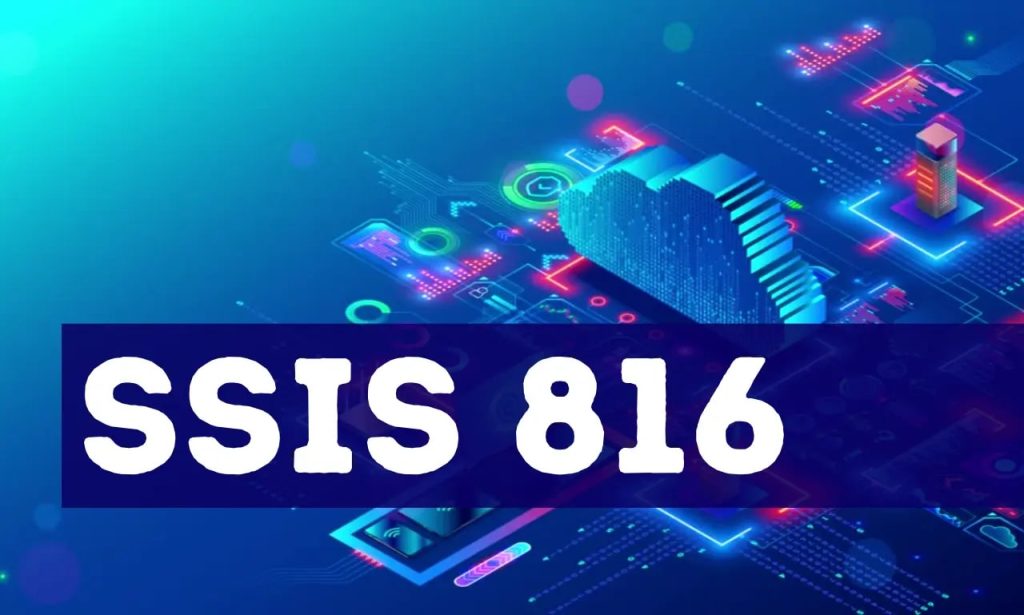SQL Server Integration Services SSIS 816 is a powerful data integration, transformation, and workflow management tool. As businesses increasingly need to handle large volumes of data efficiently, mastering (SSIS) 816 can be a game-changer.
In this comprehensive guide, we will explore the ins and outs of (SSIS) 816, addressing frequently asked questions, providing in-depth insights, and offering actionable tips to help you leverage its full potential.
Table of Contents
What is SSIS 816?
SSIS 816, a component of Microsoft SQL Server, is an ETL tool that simplifies data migration and integration. It enables users to extract data from various sources, transform it according to business rules, and load it into destinations for analysis and reporting. Beyond ETL, SSIS 816 offers automated workflow features, ensuring seamless data operations.

Key Features and Benefits
- Seamless Data Integration: (SSIS) 816 enables integration from multiple sources, ensuring data consistency and accuracy.
- Automation: Automates complex workflows, saving time and reducing manual errors.
- Scalability: Handles large volumes of data, making it suitable for businesses of all sizes.
- Flexibility: Supports various data formats and integration scenarios.
- Performance: Optimized for high performance, ensuring quick and efficient data processing.
Advanced Features
Script Tasks and Components
Script tasks and components in this system allow custom code to be integrated into packages, providing flexibility and extending functionality.
Package Configurations
Package configurations enable dynamic configuration of (SSIS) packages, making managing and deploying packages across different environments easy.
Logging and Reporting
It offers robust logging and reporting capabilities, allowing you to monitor package execution, identify bottlenecks, and ensure your data integration processes run smoothly.
Strategies to Consider
- Leverage Visual Content: Use infographics and diagrams to illustrate complex concepts, making the content more engaging and easier to understand.
- Include Case Studies: Highlight real-world examples of how ssis-816 has benefited businesses, providing practical insights and boosting credibility.
- Offer Downloadable Resources: Provide templates or sample SSIS packages for readers to download and experiment with, adding value to the content.
- Create a Series: Break down the topic into articles, each focusing on a different aspect of SSIS 816, to keep readers coming back for more.
- Engage with Interactive Content: Incorporate quizzes or interactive elements to engage readers and enhance their learning experience.
Frequently Asked Questions
How does SSIS 816 improve data integration?
SSIS 816 streamlines data integration by providing a unified platform for extracting, transforming, and loading data from various sources into a central repository. This ensures that data is consistent and accurate, reducing the risk of errors and improving decision-making.
What are the main components of SSIS 816?
The main components include:
Control Flow: Manages the workflow of tasks.
Data Flow: Handles the movement and transformation of data.
Event Handlers: Respond to events during package execution.
Parameters: Allows dynamic configuration of packages.
Can SSIS 816 handle real-time data integration?
Yes, SSIS 816 can handle real-time data integration by using data flow tasks that process data as it is received. This capability is crucial for businesses that need up-to-date information for real-time decision-making.
Is ssis816 suitable for big data projects?
Absolutely. It is designed to handle large volumes of data efficiently. Its scalability and performance optimization make it ideal for big data projects.
How can I troubleshoot common issues in SSIS 816?
Common issues can be troubleshooted by:
Checking error logs for detailed error messages.
Breakpoints and data viewers are used to monitor data flow.
Validating and debugging packages to identify and fix errors.
Tips for Mastering
- Start with the Basics: Understand the fundamental components and concepts before diving into advanced features.
- Leverage Community Resources: Utilize forums, tutorials, and documentation to enhance your understanding and troubleshoot issues.
- Practice Regularly: Build and execute packages regularly to gain hands-on experience.
- Keep Up with Updates: Stay informed about new features and updates to leverage the latest capabilities.
- Optimize Performance: Use best practices for performance optimization, such as minimizing transformations and using appropriate data types.
Conclusion
Mastering (SSIS) 816 can significantly enhance your data integration and workflow automation capabilities. Understanding its features, addressing common questions, and following best practices can unlock its full potential and drive better business outcomes. Whether handling small-scale projects or large-scale data integration tasks, it offers the tools and flexibility you need to succeed.

